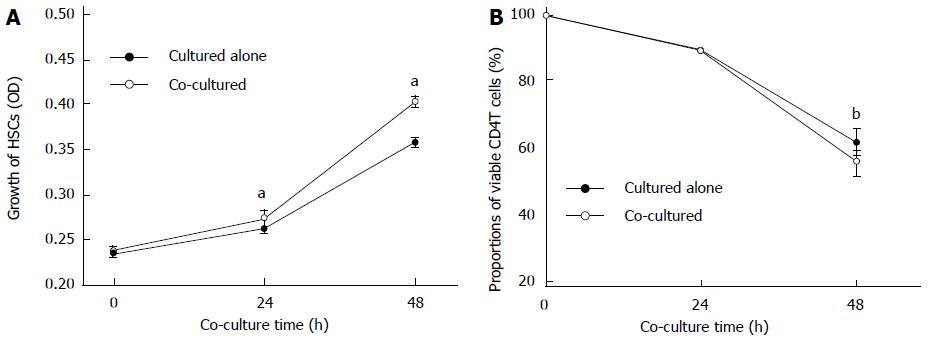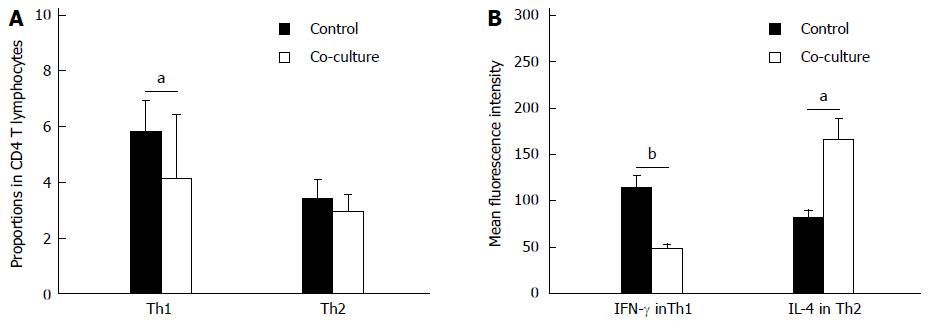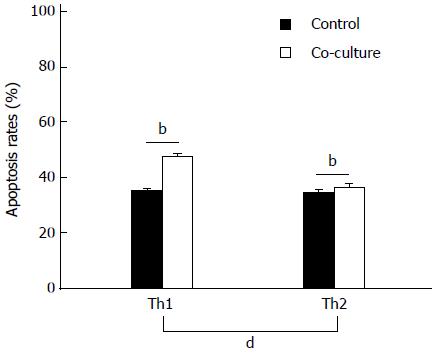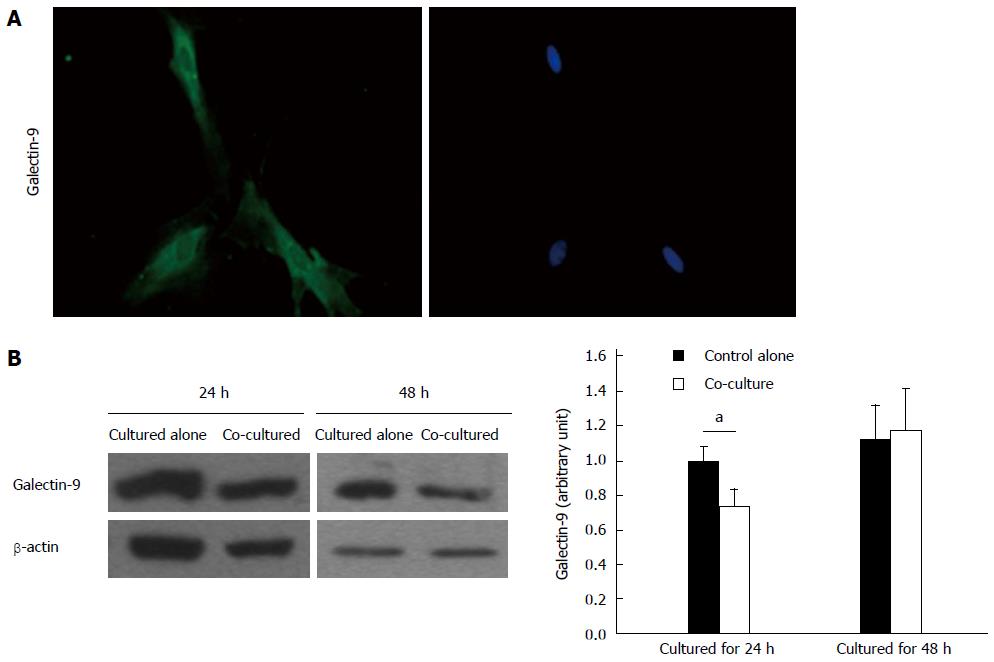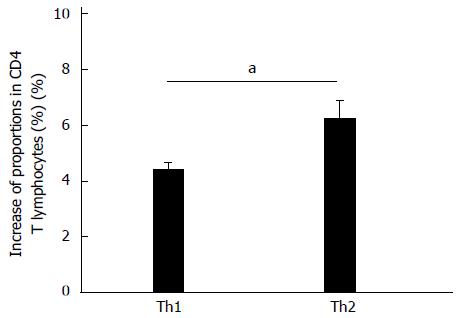Copyright
©The Author(s) 2015.
World J Gastroenterol. Jun 21, 2015; 21(23): 7165-7171
Published online Jun 21, 2015. doi: 10.3748/wjg.v21.i23.7165
Published online Jun 21, 2015. doi: 10.3748/wjg.v21.i23.7165
Figure 1 Effect of co-culturing on viability of activated hepatic stellate cells and CD4+ T lymphocytes.
A: Proliferation of activated hepatic stellate cells (HSCs); B: Proportion of viable CD4+ T lymphocytes when cultured alone or co-cultured together (n = 3). OD: Optical density; data are expressed as mean ± SD. aP < 0.05 vs cultured alone; bP < 0.01 vs control.
Figure 2 Effect of co-culturing on Th1/Th2 profile.
A: Proportion of CD4+ T lymphocytes identified as Th1 and Th2 cells; B: Mean fluorescence intensity of interferon (IFN)-γ in Th1 cells and interleukin (IL)-4 in Th2 cells assessed by flow cytometry when cultured alone or co-cultured for 48 h with activated hepatic stellate cells (n = 10). Data are expressed as mean ± SD. aP < 0.05, bP < 0.01 vs control.
Figure 3 Effect of co-culturing on apoptosis of Th1 and Th2 cells.
Apoptosis rates were assessed after 24 h by flow cytometric analysis of caspase-3 staining in CD4+ T lymphocytes cultured alone or co-cultured with activated hepatic stellate cells (n = 10). Data are expressed as mean ± SD; bP < 0.01 vs control.
Figure 4 Galectin-9 expression in activated hepatic stellate cells.
A: Immunofluorescence analysis of galectin-9 expression (left panel, green) in activated rat hepatic stellate cells (HSCs) (right panel, nuclear costain) (magnification × 400); B: Western blot analysis of galectin-9 expression in activated rat HSCs cultured alone or co-cultured with CD4+ T lymphocytes (n = 5). Data are expressed as mean ± SD. aP < 0.05, cultured alone vs co-cultured.
Figure 5 Effect of co-culturing on Th1 and Th2 cell differentiation.
CD4+ T lymphocytes with differentiation potential were co-cultured for 48 h with activated hepatic stellate cells (n = 5). Data are expressed as mean ± SD; aP < 0.05, Th1 vs Th2.
-
Citation: Xing ZZ, Huang LY, Wu CR, You H, Ma H, Jia JD. Activated rat hepatic stellate cells influence Th1/Th2 profile
in vitro . World J Gastroenterol 2015; 21(23): 7165-7171 - URL: https://www.wjgnet.com/1007-9327/full/v21/i23/7165.htm
- DOI: https://dx.doi.org/10.3748/wjg.v21.i23.7165









